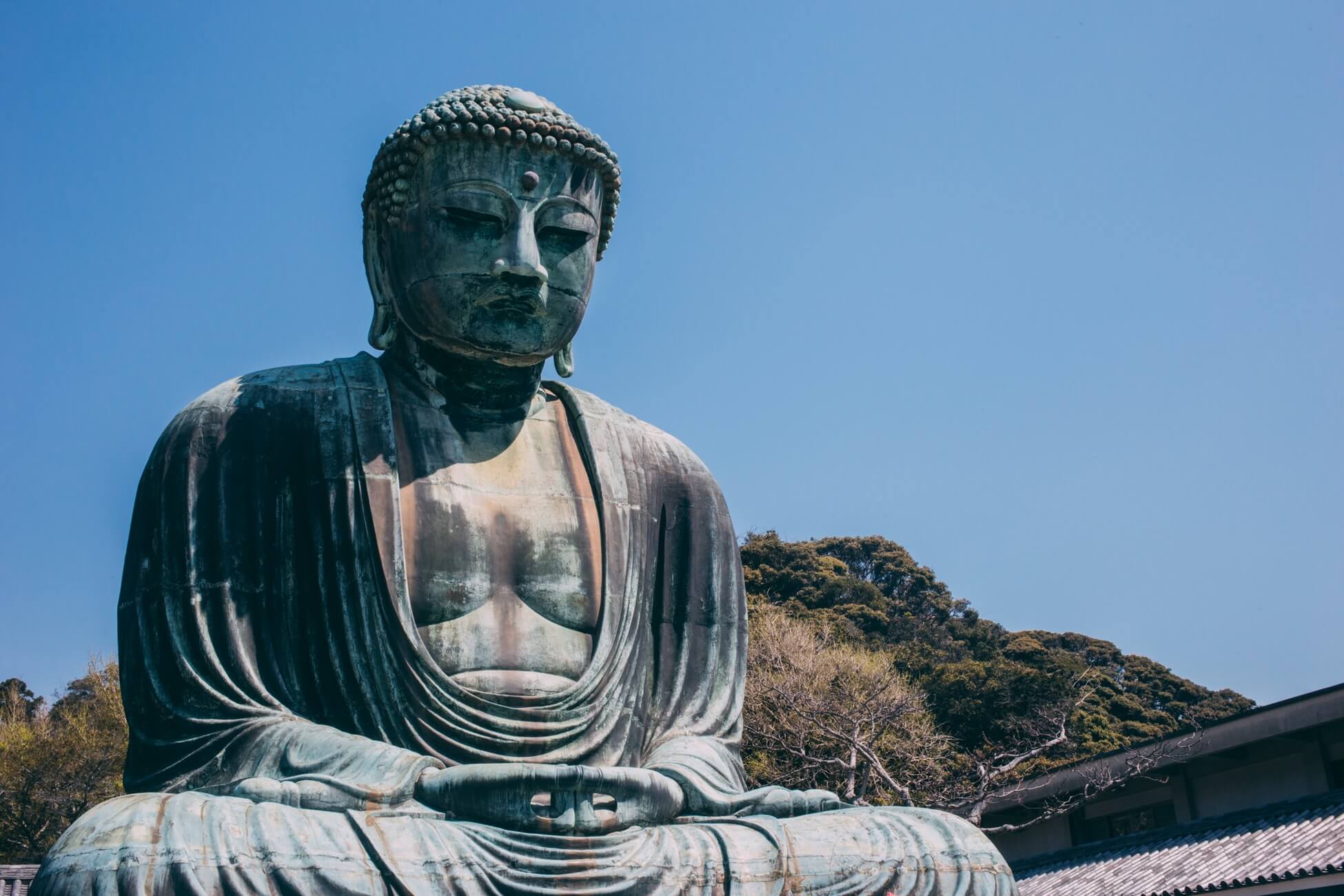In the 14th and 15th centuries Kamakura was the seat of political power, seized by military leaders from Kyoto. What developed was 3 square mile testament to the connection between politics and religion with over one hundred temples and shrines. Today, Kamakura is mainly visited by Japanese tourists ready to experience medieval culture and tea parlors. If you are south of Tokyo, Kamakura is a gem on Sagami Bay for any Kamakura tea ceremony trip.

Contents
1. Engaku-ji Temple
This Zen Buddhist temple was founded in 1282 is an ancient wooden structure that is pristine in its architecture and landscaping. It was created at the request of the then ruler of Japan, the regent Hōjō Tokimune. It was requested after he had repelled a Mongolian invasion from Mainland China. It is currently one of the most important Zen Buddhist complexes in Japan and is ranked second amongst the Kamakura’s Five Mountains. Besides an exquisite Kamakura tea ceremony this temple is a special and serene experience.
Map: https://goo.gl/maps/PEExmNjrfreKkQGQA
Access: 5 minute walk from Kita-Kamakura Station
Hours: 8:00-16:00
Closed: None (unless typhoon or snow)
Website: https://www.engakuji.or.jp/
Price:
- ¥300/person – admission
- ¥1000/person – tea ceremony
2. Hokokuji Temple
Also know as the “Bamboo Temple” this Zen Buddhist temple originated in 1334. The bamboo grove covers most of the 13,000 square meters and is No. 10 on the Kamakura 33 Kannon pilgrimage locations. You are able to sip tea with fruit in the ceremony and then walk amongst the tall bamboo on the old grounds where the long gone masters wrote poetry and painted. It is easy to get lost in the sound of the swaying green trees and the sweet smell of under growth. You can then return to the main temple and visit with the statue of Gautama Buddha, called Shaka Nyorai, the Bamboo Temple’s main and most famous image.
Map: https://goo.gl/maps/PS7gU7FhJMYHgDJeA
Access: 11 minute drive from Kamakura Station
Hours: 9:00-16:00
Closed: Dec. 29 – Jan. 3
Website: https://houkokuji.or.jp/
Price:
- ¥300/person – admission
- ¥600/person – tea ceremony
3. Jomyoji Temple
Built in 1188 the Jomyoji Temple is ranked fifth amongst the Kamakura’s Five Mountains. It is a Zen Buddhist temple in the Rinzai sect. On the hill behind the temple stands a small shrine called Kamatari Inari Shrine. Legend has it that Kamtari received a sickle from Inari to protect himself. After it was used he buried it on this hill in the ground to give it back to Inari. The temple itself still retains its beauty as if it was just built. Surrounded by trees and walking paths there is a restored tea house and elevated restaurant run by the monks with amazing views of the surrounding community.
Map: https://goo.gl/maps/c1gb9JRgVM6KGG4e8
Access: 15 minute walk from Kamakura Station
Hours: 9:00-16:30
Closed: Dec. 29 – Jan. 1
Website: https://trip-kamakura.com/place/183.html
Price:
- ¥300/person – admission
- ¥1000/person – tea ceremony
4. Tsurugaoka Hachimangu Temple
Built in the center of the development of Kamakura the original shrine was built in 1063 as a small shrine for the Hachiman kami. Then in 1180 it was moved and enlarged by Minamoto Yoritomo. This temple is the most important temple in Kamakura because Minamoto Yoritomo was the founder and first shogun of the Kamakura government. It retains its appeal to all individuals that visit. With multiple torii gates along the way, the entry is a long and wide walkway starting from the central waterfront of downtown Kamakura. It is open during the holidays and holds events throughout the year making it one of the most visited temples in all of Japan. A visit to Kamakura is not complete without a stop at this monumentally historic site and cultural center. Occasionally, tea ceremonies are hosted here for the public to enjoy.
Map: https://goo.gl/maps/mGxGKcTsitkTgxMM8
Access: 5 minute walk from Kamakura Station
Hours: 5:00-21:00
Closed: None
Website: http://www.tsurugaoka-hachimangu.jp/
Price:
- ¥200/person – admission
Kamakura is a popular day-trip destination for tourists staying in Tokyo. It is filled with historical sites, temples, and shrines to visit and admire. The traditional feel of the area also makes it the perfect place to experience the Japanese tea ceremony. If you’re interested in a more intimate experience of a ceremony hosted in a Japanese local’s home, we recommend checking out airKitchen tea ceremony experiences in Tokyo here.
▼The Best Tea Ceremony Experiences in Kyoto▼
▼The Best Tea Ceremony Experiences in Tokyo▼
▼The Best Tea Ceremony Experiences in Osaka▼
